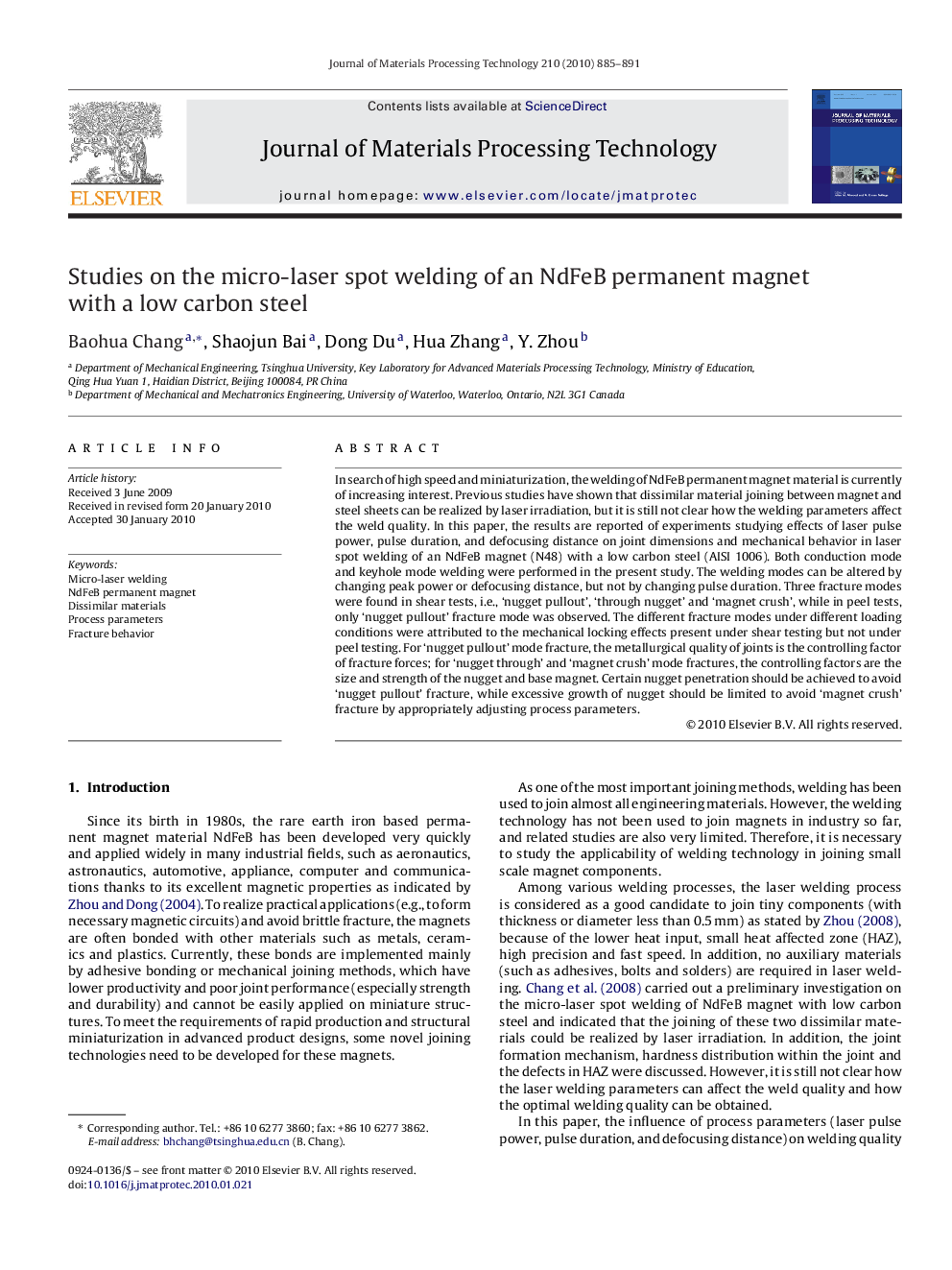| Article ID | Journal | Published Year | Pages | File Type |
|---|---|---|---|---|
| 791184 | Journal of Materials Processing Technology | 2010 | 7 Pages |
In search of high speed and miniaturization, the welding of NdFeB permanent magnet material is currently of increasing interest. Previous studies have shown that dissimilar material joining between magnet and steel sheets can be realized by laser irradiation, but it is still not clear how the welding parameters affect the weld quality. In this paper, the results are reported of experiments studying effects of laser pulse power, pulse duration, and defocusing distance on joint dimensions and mechanical behavior in laser spot welding of an NdFeB magnet (N48) with a low carbon steel (AISI 1006). Both conduction mode and keyhole mode welding were performed in the present study. The welding modes can be altered by changing peak power or defocusing distance, but not by changing pulse duration. Three fracture modes were found in shear tests, i.e., ‘nugget pullout’, ‘through nugget’ and ‘magnet crush’, while in peel tests, only ‘nugget pullout’ fracture mode was observed. The different fracture modes under different loading conditions were attributed to the mechanical locking effects present under shear testing but not under peel testing. For ‘nugget pullout’ mode fracture, the metallurgical quality of joints is the controlling factor of fracture forces; for ‘nugget through’ and ‘magnet crush’ mode fractures, the controlling factors are the size and strength of the nugget and base magnet. Certain nugget penetration should be achieved to avoid ‘nugget pullout’ fracture, while excessive growth of nugget should be limited to avoid ‘magnet crush’ fracture by appropriately adjusting process parameters.
